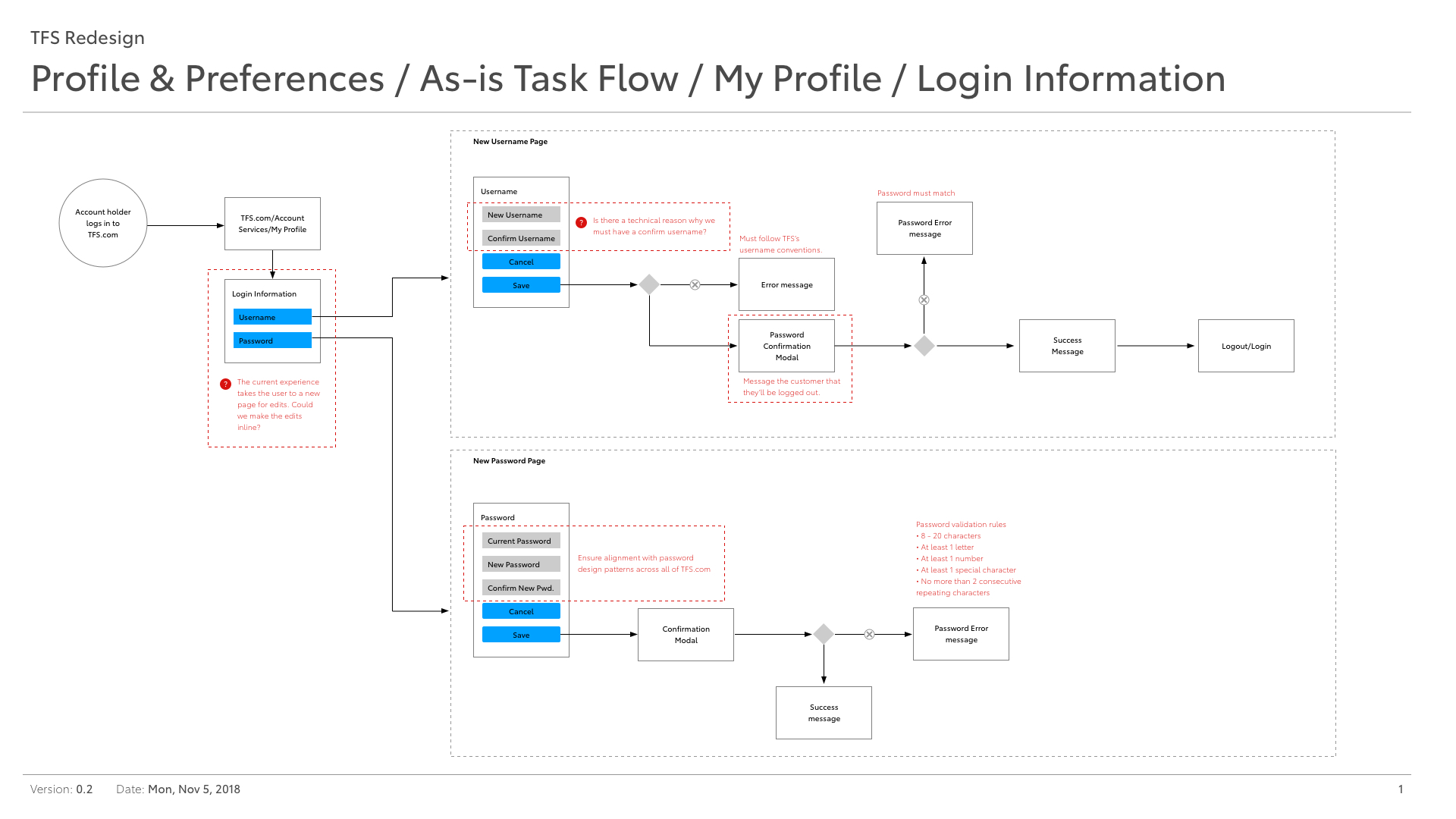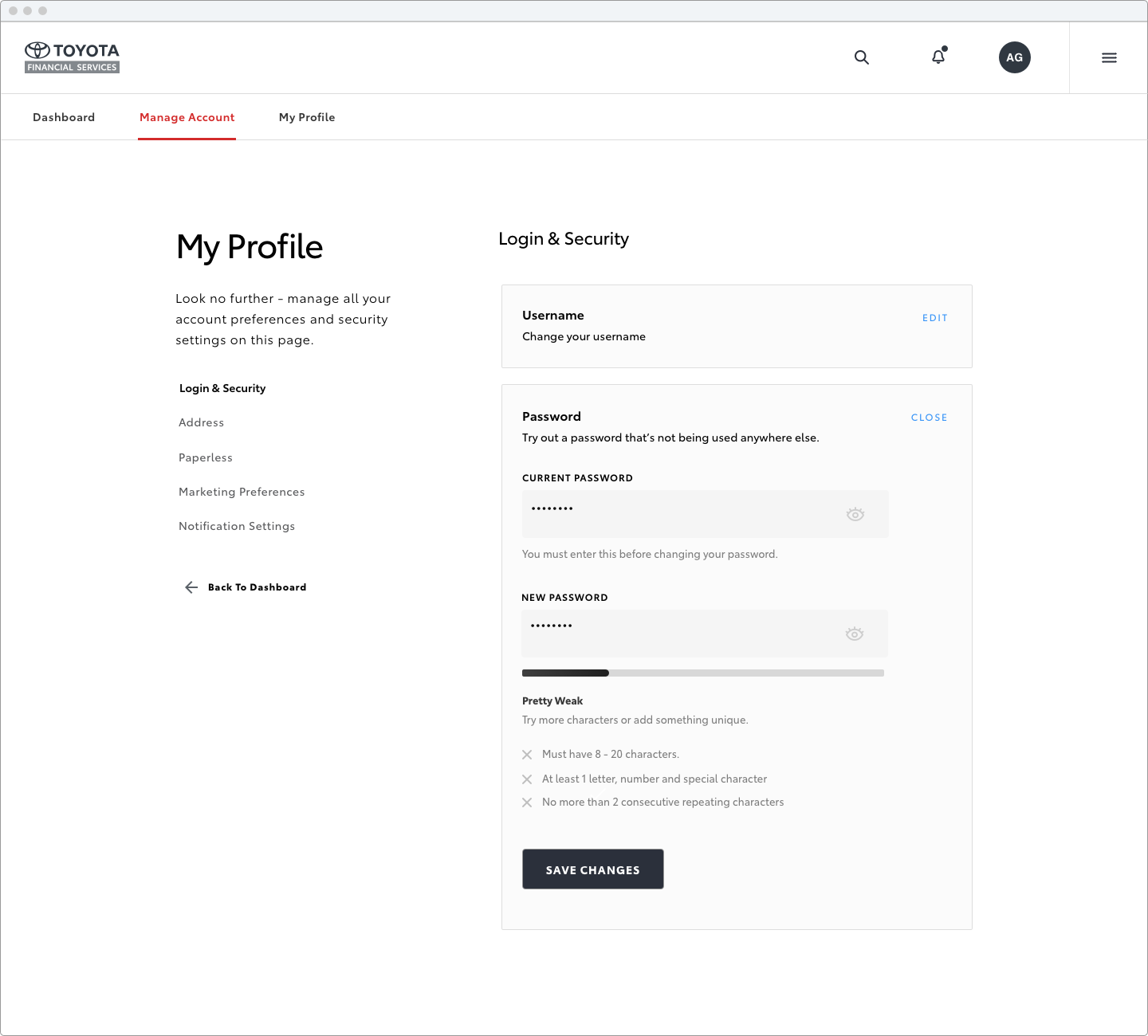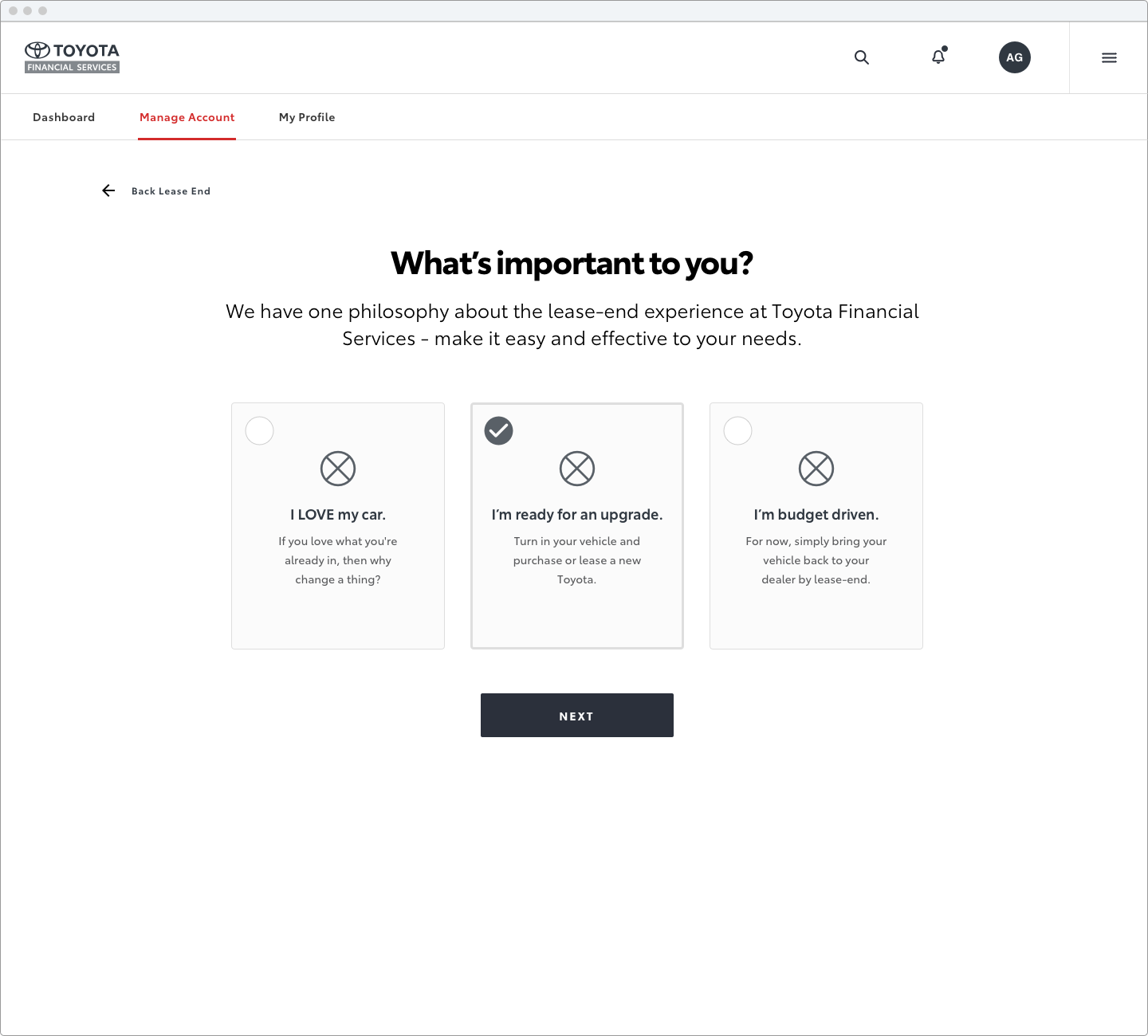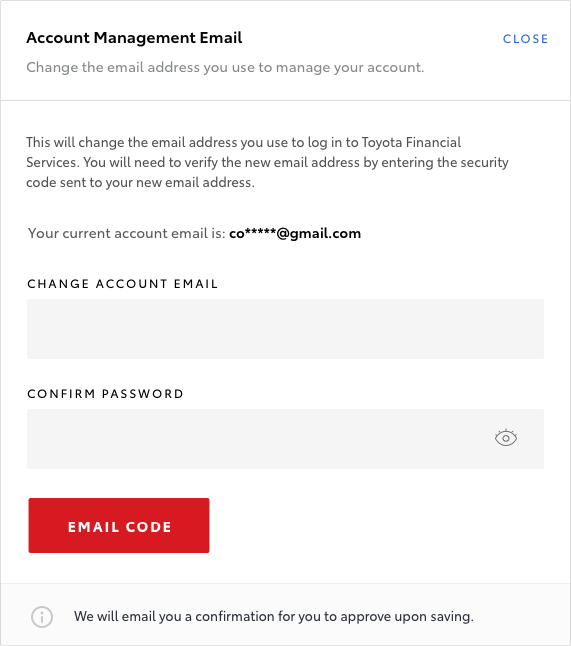TOYOTA
ACCOUNT MANAGEMENT WEBSITE
I was part of a team that redesigned Toyota's Financial Service's account management ecosystem of experiences. Our goal was to create an experience that balanced the pragmatism of paying for a vehicle with the personal emotion of owning it. My responsibilities included information architecture, navigation, profile & preferences, and lease-end options.
DISCOVERY
I consumed analytics, user journeys, business objectives, and marketing data as part of my heuristic evaluation of their current experience. Here are some key insights that helped inform my designs.
60%
of all traffic comes from mobile.
1/5
of users returned to the payment section within ten days.
26%
of users faced an error on the first page of the registration process.
25%
of customers pay off their vehicle in the first two years.
2MM
monthly unique visitors.
DEFINE
My driving principle for defining features was that every user's path should be the right one. One way of achieving this belief was to simplify navigation. We reduced navigation items from over thirty down to five.
DESIGN
The experience I designed had to work for many scenarios and loan types (purchased vs. leased). At the core of my user-centric designs were scalability and efficiency. This approach was necessary because the account management system had to be responsive. Here are some wireframes I created that depict the early stages of Account Management and Lease-End/Payoff experiences.
GAMIFICATION
A critical initiative for Toyota Financial Services was to increase the number of customers to go paperless. The original design did not provide clarity or motivation, so I saw this as an opportunity to gamify the experience. Users want to complete things, including shapes. I implemented this user behavior principle as a percentage graph.


PROFILE & PREFERENCES
I created information modules that would serve as the building blocks for any account management scenario. Each module would be designed to include brand, usability, technical, and responsive guidelines.
SIMPLIFYING COMPLEXITY
The Payoff Redesign experience was the most crucial feature due to financial loss ($1.2 MM per annum) related to inaccurate customer payoff. I created a balance between business and user goals by providing the user with the information they needed the most while applying behavioral economic design principles (such as anchoring, framing, and defaulting) to achieve Toyota's financial goals.
WHAT I LEARNED
YOU CAN'T CREATE A SUCCESSFUL USER EXPERIENCE WITHOUT SOLVING THE RIGHT PROBLEM.
Often, organizations understand customer pain points but don't realize what causes them. UX Designers can be allies to business teams in helping them discover root causes and problems. We accomplish this through design workshops, interviews, analytics reviews, and analysis of user research results. This united front helps product owners with requirements. More importantly, solving the right problem is crucial to creating usable, valuable, and meaningful user experiences.





















